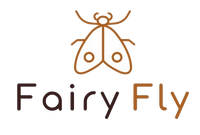Identify and biologically combat 5 common plant pests
Author: FairyFly | Reading time: 5 minutes
Are your plants displaying yellow leaves, sticky residue, or tiny webs? Then you probably have unwanted guests! Plant pests can cause significant damage, but with biological beneficial organisms, they can be effectively and environmentally friendly controlled. Here's how to identify the 5 most common pests and get rid of them naturally.
1. Aphids - The green plant suckers
How to identify aphids:
- Small, green or black insects (1-3mm)
- Collect on shoot tips and undersides of leaves
- Sticky honeydew residue on leaves
- Curled or yellow leaves
The damage: Aphids suck plant sap and significantly weaken the plant. The honeydew they secrete can lead to sooty mold and make plants more susceptible to other diseases.
The biological solution: Ladybugs and lacewings are the natural enemies of aphids. A single ladybug can consume up to 150 aphids per day, while lacewing larvae can consume up to 500 aphids during their development.
2. Spider mites - tiny pests with a big impact
How to identify spider mites:
- Tiny, yellowish or reddish dots (0.5mm)
- Fine webs on leaves and shoots
- Yellowish speckled spots on the upper side of the leaves
- In case of severe infestation: bronze-colored leaves
The damage: Spider mites pierce plant cells and suck out their contents. This leads to discoloration, reduced photosynthesis, and, in severe infestations, can lead to plant death.
The biological solution: Predatory mites are specialized hunters that feed exclusively on harmful mites. They are so tiny that they can penetrate even the smallest hiding places of spider mites. One predatory mite consumes up to 20 spider mite eggs or five adult mites per day.
3. Thrips - The silvery leaf destroyers
How to identify thrips:
- Very small, elongated insects (1-2mm)
- Silvery sucking spots on leaves
- Black droppings on the underside of the leaves
- In case of severe infestation: silvery shiny leaves
The damage: Thrips scrape the leaf surface and suck the oozing sap. This leads to characteristic silvery spots and can significantly weaken the plant.
The biological solution: Predatory mites of the species Neoseiulus cucumeris specialize in thrips. They actively hunt the thrips larvae and can quickly bring a population under control.
4. Fungus gnats - Annoying flies with voracious larvae
How to identify fungus gnats:
- Small, black flies (2-4mm) around the plants
- Moist potting soil as a breeding ground
- Small, white larvae in the soil
- Root damage in young plants
The damage: While the adult flies are only annoying, the larvae feed on plant roots and can cause considerable damage, especially to young plants.
The biological solution: SF nematodes (Steinernema feltiae) are microscopic roundworms that specifically seek out and parasitize fungus gnat larvae in the soil. They are simply applied with irrigation water and work invisibly for weeks.
5. Whiteflies - Tiny white pests
How to identify whiteflies:
- Tiny, white, flying insects (1-2mm)
- Swarm when the plant is touched
- Yellowish, sticky leaves due to honeydew
- Often found on the underside of leaves
The damage: Like aphids, whiteflies suck plant sap and secrete honeydew. In severe infestations, they can significantly weaken plants and transmit viral diseases.
The biological solution: Encarsia formosa , a tiny parasitic wasp, parasitizes whitefly larvae. The parasitized larvae turn black and can no longer hatch. A highly effective and sustainable solution.
Why biological control is the better choice
Benefits for you and your family:
- No toxic chemicals in living spaces
- Safe for children and pets
- No waiting times for edible plants
- Sustainable protection without resistance development
Benefits for the environment:
- Protection of beneficial insects
- No pollution of the soil or water
- Promoting natural balance
- Reduction of packaging waste through fewer sprays
Tips for success in the application
1. Detect early, act quickly . Check your plants regularly. The earlier you detect pests, the easier it is to control them.
2. Create optimal conditions
- Temperature: 18-25°C for most beneficial insects
- Humidity: 60-80% for best effectiveness
- Do not use pesticides during treatment
3. Be patient. Biological control doesn't work immediately like chemicals, but it's more sustainable. Initial success usually occurs after 1-2 weeks.
4. Don't forget prevention. Healthy, well-maintained plants are less susceptible to pest infestation. Optimal site conditions and balanced fertilization strengthen their natural defenses.
Conclusion: Protect naturally, benefit in the long term
Biological pest control with beneficial insects is not only environmentally friendly but also highly effective. These tiny helpers work around the clock to keep plants healthy and maintain a natural balance in your green home.
Do you have questions about the correct application or would you like to know which beneficial organism is suitable for your specific problem? Contact us – we'll be happy to advise you!




